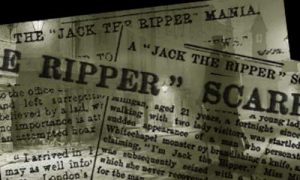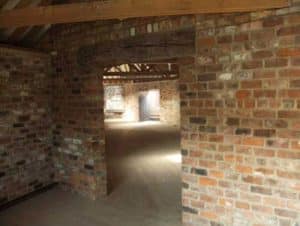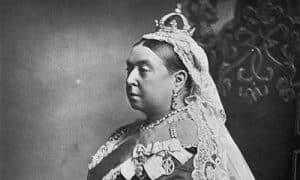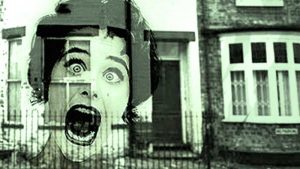Leading Ripperologist MIKE COVELL tells how Ripper mania spread to Hull in the north east of England following the Whitechapel murders in 1888
It’s August, less than a week after the 125th Anniversary of the murder of Martha Tabram and a little under two weeks away from the 125th Anniversary of the murder of Mary Ann “Polly” Nichols, and I am stood on a lonely corner in the dark awaiting my guests.
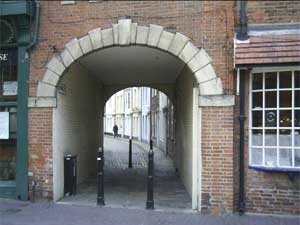
The seagulls, which have flown inland, have suddenly gone quiet and the traffic has died down.
Tonight, I am taking my guests on a Jack the Ripper tour, but this is a Ripper tour like no other, because this one is set in Kingston upon Hull, a former whaling and fishing port on the East Coast of England.
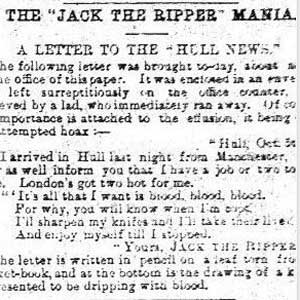
You are probably wondering what the 125 year old unsolved mystery that is “Jack the Ripper” has to do with a place that is approximately 200 miles north of the East End streets of Whitechapel and Spitalfields, but I think you would be surprised at the connections.
19th Century Kingston upon Hull, or Hull as it is known to many, was a massive port with imports and exports to and from London, Liverpool, Europe, America, and throughout the southern hemisphere. It had a massive population of immigrants, many of which came from Europe, rising crime, prostitution, and such a number of brothels that the Chief Constable classified them into sub categories of cleanliness rather than police them. The Hull docks, at the time of the scare, surrounded the old town area and one could travel through them on a boat in a complete circle which made policing them a difficult task.
The Chief Constable during the period was Captain Gurney, his Deputy Chief was a C. Jones and both men were well known officers, in fact, in later years they would be associated with a murder case that filled countless newspaper columns in 1891 when Mary Jane Langley was murdered at Marfleet. The Hull police, in 1888, had two Superintendents, seven Inspectors, 32 Sergeants, 12 Detectives, and 222 Constables.
Meanwhile, Kingston upon Hull’s population was rising, and between 1801 and 1901 the population rose from 22,000 to 239,000, a leap of 217,000! During the period of 1888 the population of Hull was said to be at 202,400 residents dwelling within the city boundaries, meaning that 277 officers had to police a staggering number of people, and this figure was rapidly rising with the real possibility that “Jack the Ripper” might be on his, or her, or there, way to Hull!
Then, on October 5th 1888, their worst fears where met, when a letter was sent to The Hull News offices on Whitefriargate. The letter stated:
The Jack the Ripper Mania: Letter to the Hull News
The following letter was brought to-day, about noon to the office of this paper. It was enclosed in an envelope and left surreptitiously on the office counter, it is believed by a lad, who immediately ran away. Of course no importance is attached to the effusion, it being only an attempted hoax:-
Hull Oct 5th’
I arrived in Hull last night from Manchester, and may as well inform you that I have a job or two to do here.
London’s got two hot for me.
It’s all that I want is blood, blood, blood.
For why, you will know when I’m (copped?)
I’ll sharpen my knifes and I’ll take their lives,
and enjoy myself till I stopped.
Yours, JACK THE RIPPER
The letter is written in pencil on a leaf torn from a pocket-book, and at the bottom is the drawing of a knife represented to be dripping with blood.
From that point on Hull was obsessed with the case. It had been following the murders from as early as the death of Emma Smith, which was widely reported in the Hull newspapers, and more and more reports followed. Eventually several people were arrested in Hull between the years 1888 and 1900, the last being James Gray, who was arrested after stabbing 5 women in Hull in one night. He was widely reported in the national press to be “Jack the Ripper” but he appeared to be too young and had no links to the East End.
Ripper letters and Ripper scares aside the city has, over the years, been a location associated with no fewer than 11 previously named “Jack the Ripper” suspects. From Robert D’Onston Stephenson, who was born here, to Frederick Bailey Deeming, who defrauded a local jewellery store and was in Hull Gaol for 9 months. James Sadler worked on Winestead, a Hull based steamer, and Frederick Richard Chapman was a doctor here for many years throughout the 1870’s. There have been numerous members here that were said to have been involved in the Royal Conspiracy, and a doctor, who practiced here between 1871 and 1880, who was in London and died in December 1888.
With all these and more, I decided to launch a tour as part of my company, Amazing Hull Tours. The “Jack the Ripper – The Hull Connection” lectures have been going well, so the next step was to launch a tour for people to join and see the locations themselves.
During the tour they will be taken to no fewer than 15 locations, and given over 40 stories associated with suspects, scares, theories and letters between 1888 and 1900. At each location I tell them the history of the location, the links to Ripper suspects, and why theses suspects are suspects. I have recently taken to packing a folder full of primary sources to show people as I walk them around, and take great delight in the shocked faces and gasps as I show them newspaper reports, photos and letters that provide the proof to my stories.
To date there have been several successful tours covering “Jack the Ripper” as well as local history, heritage, and the unexplained. All of them have been greatly received by those that dare venture into the streets of Hull after hours.
We might not be in the East End of London, but walking along the Georgian and Victorian back streets of Hull when the sun goes down certainly gives one the impression that the Ripper could have walked here.
Find out more about Jack the Ripper in Hull on one of Mike Covell’s Amazing Hull Tours.

MIKE COVELL is a Hull based local historian and Ripperologist. His research has been published in Ripperologist Magazine, and the Casebook Examiner. He is a Moderator at jtrforums.com and a blogger at Ripper Casebook.Org. He has appeared on the Rippercast Podcast, Ripper Radio, and has made appearances on BBC Radio Humberside and BBC’s Look North talking about the case. He has appeared in The Hull Daily Mail, The Hull Advertiser, The Cottingham Times, and has been cited in several books including The Jack the Ripper A-Z, and The Jack the Ripper Location Photographs.



